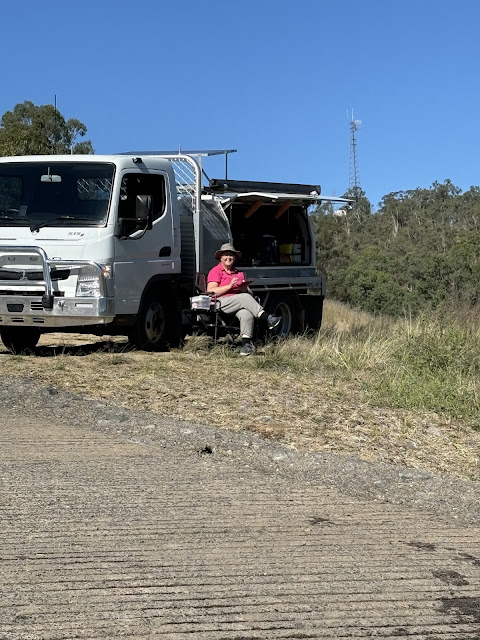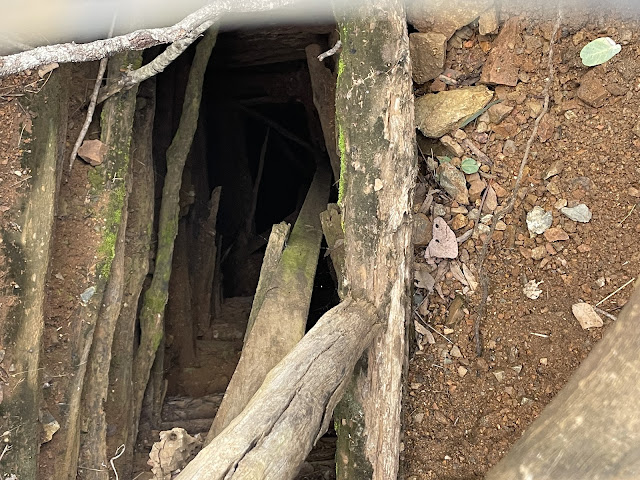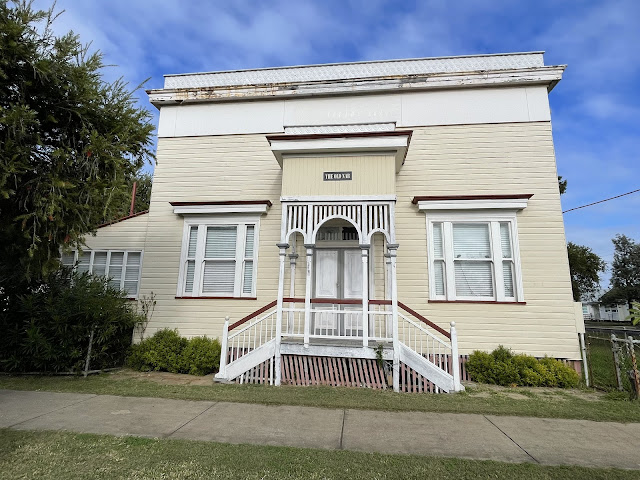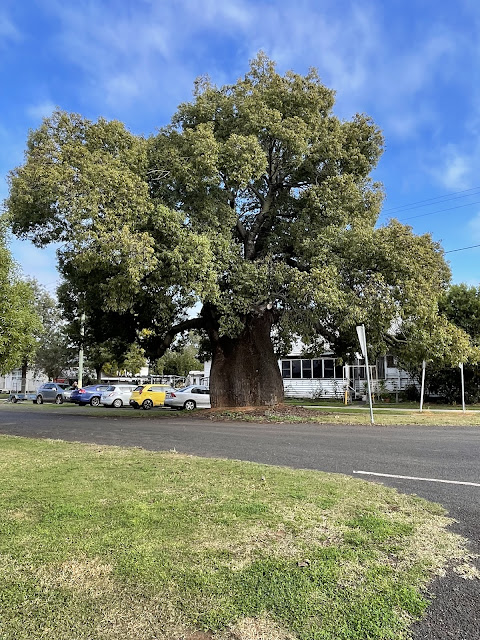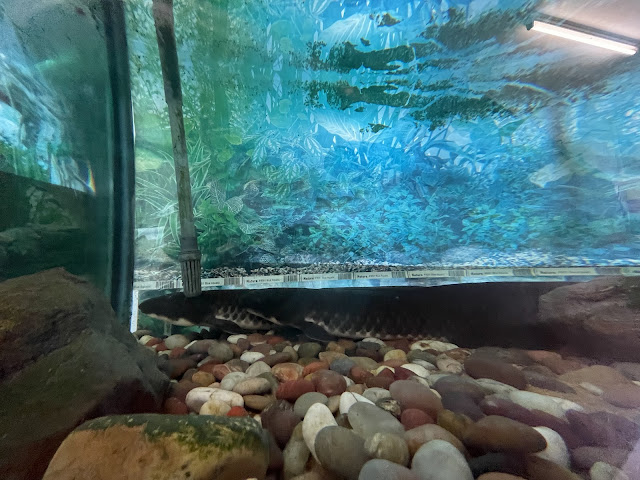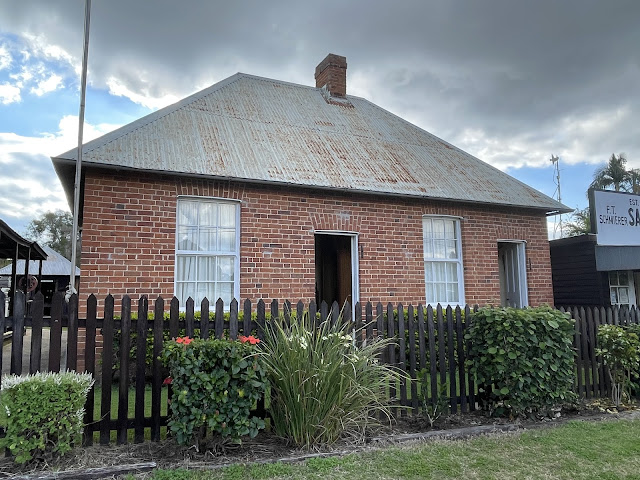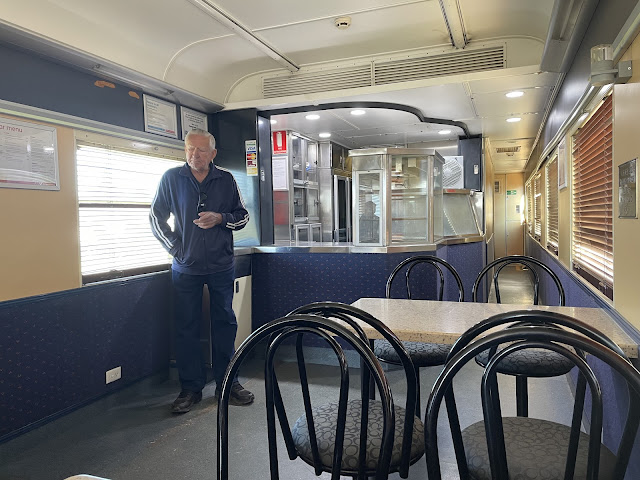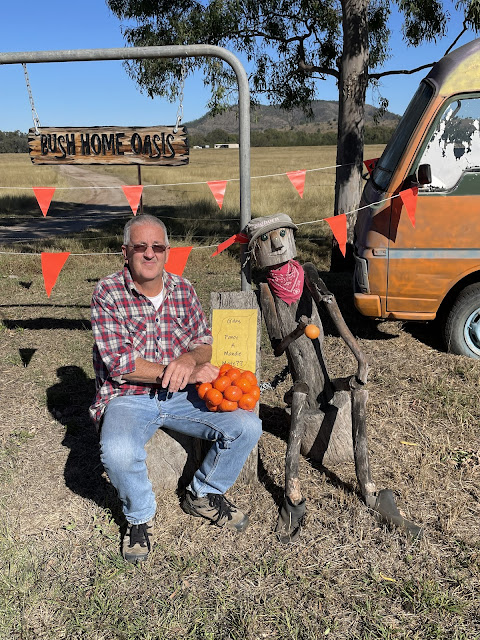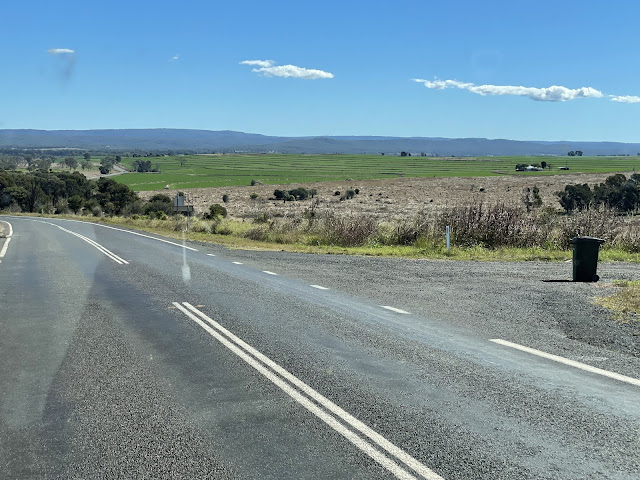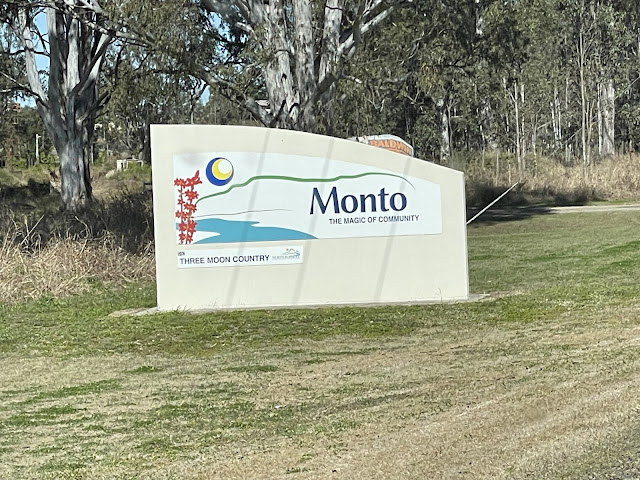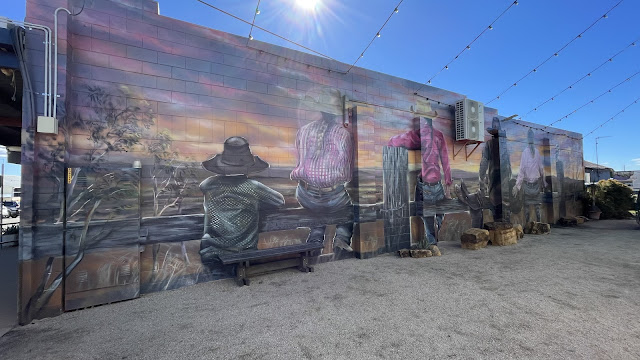On previous trips north we had seen signs to Cania Gorge with a rather attractive photo on them and told ourselves that we must visit “one day”. Well, this was to be the day…. or days.
The road in ends up being just a narrow single lane strip of bitumen.
We stayed in a lovely caravan park. It was well set up for families with a great water park and pools, games room and bouncing pillow. However, that was all at one end and the rest of the park was nice and leafy, with lots of birds and kangaroos visiting. The sites were set up around a nice big grassy area and each night we were there, a group of campers all gathered together around a campfire to sit and chat. You couldn’t get nicer.
Cania Gorge is a beautiful spot to go bushwalking through the lush rainforest as well as dryer landscapes, under towering sandstone cliffs. Nearby, there is Cania Dam, a water storage ideal for fishing and kayaking.
Each afternoon the local birds are fed, so of course we had to go down and have a look.
Yes, we joined in.
It was mainly rainbow lorikeets, but there were also lots of sulphur crested cockatoos (getting to be too many as they get a bit aggressive, so they were going to cut down on feeding seed for them), (red and green) king parrots, (pink and grey) galahs, (light grey) top knot pidgeons and (dark grey) apostle birds.
On our first morning we woke to a light mist throughout the campground, as seen in the top photo. It was quiet and still. Our plan was to head on down to the dam for Mick to take the kayak out. The perfect day for it.
We had to watch out for the local traffic jam on our way.
It was still misty as we reached the dam.
There were so many pretty spiders webs covered in dew.
A little tinnie set off into the mist.
It was all so still.
Most of the mist had lifted by the time Mick launched his kayak. He hasn’t got a Queensland fishing licence, so he didn’t take his fishing rod out, just enjoyed the scenery. You will notice he has a small electric motor on his kayak, due to his dud shoulder making it difficult to paddle. This meant that he glided off in silence. Even quieter than paddling. There were only three other tinnies out somewhere on the dam fishing, but we couldn’t hear them.
The water was like glass.
He went around to have a look at the dam wall.
Look at those reflections.
So, what was I up to while Mick was out on the water?
I tried to do some stitching of my hexy flowers. I did chat to a few people who just drove down to the water to have a look before continuing on their way, including one patchworker, but for much of the time it was just me, sitting quietly with only the sounds of birds and insects for company. So peaceful.
We both had an absolutely lovely morning.
On our way back from the dam we drove up to the lookout where we learnt that the dam was only completed in 1983, so fairly new. It is on the Three Moons Creek.
The village of Cania was submerged by the dam. Some of the headstones from the cemetery were removed to this look out, while the remainder are also submerged.
It turns out that there were gold mines in the area and not far from the dam there is a short bush walk to some of the workings at “Shamrock Mine”.
In reality, there wasn’t really a lot to see once you got there. It appears that it wasn’t a very profitable mining area.
From here we went for a short drive to the starting point of the other walks.
On our way we saw some cattle being mustered by a man on horseback. Not something you see very often these days.
The cliffs tower over the valley.
We did the very short walk at the picnic ground.
Next, we did the also rather short “Big Foot Walk”. When you get there it is obvious why it has its name.
Nearby, I was delighted to see some native silver elk horns growing on the rocks.
This did turn out to be the warmest day of our entire trip, reaching the mid 20s C. That can mean just one thing…..ice cream.
I’ll share our second day next.






















